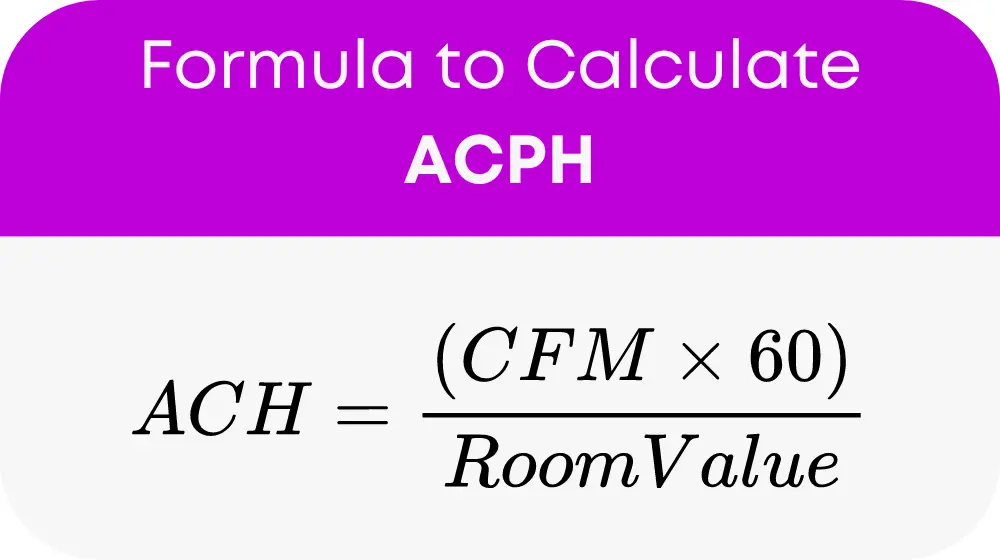The ACPH Calculator is a simple yet powerful tool that calculates the air changes per hour in a room. Air changes per hour measure how many times the air within a space is replaced with fresh air from outside or through ventilation systems in an hour. This calculation is crucial for controlling contaminants and maintaining air quality in any indoor environment.
The Formula of ACPH Calculator
To calculate ACPH, you can use the following formula:

Let’s break down this formula:
- ACH (Air Changes per Hour): This is what you’re calculating. It indicates the number of times the air within the room is replaced in one hour.
- CFM (Cubic Feet per Minute): This number represents the volume of air that flows into the room each minute. You can typically find this rate in the specs of your HVAC unit or air purifier.
- Room Volume: Calculated by multiplying the length, width, and height of the room (in feet). This figure represents the total volume of air the room can hold.
Useful Conversion Table
To simplify calculations, here’s a table with common room dimensions, their volumes, standard CFM values, and the resulting ACH:
| Room Size (ft) | Volume (cu ft) | CFM | ACH |
|---|---|---|---|
| 10 x 10 x 8 | 800 | 100 | 7.5 |
| 15 x 20 x 8 | 2400 | 200 | 5 |
| 25 x 30 x 10 | 7500 | 300 | 2.4 |
Practical Example of ACPH Calculator
Consider a room measuring 12 feet by 15 feet with a ceiling height of 8 feet, and an HVAC system providing 150 CFM of airflow. Here’s how you would calculate the ACH for this room:
-
Calculate Room Volume:
- Volume = Length x Width x Height = 12 ft x 15 ft x 8 ft = 1440 cubic feet.
-
Apply the ACPH Formula:
- ACH = (CFM x 60) / Volume = (150 CFM x 60) / 1440 cu ft = 6.25
- Therefore, the air in this room is replaced 6.25 times per hour.
Most Common FAQs
A general rule is that 5-6 ACH is suitable for residential spaces, while 6-10 ACH might be necessary in more polluted or high-traffic environments.
Check the manufacturer’s specifications for your HVAC unit or air purifier. This rating is usually list under airflow properties.
Yes, excessively high ACH can lead to energy inefficiency and uncomfortable draughts. Balancing ACH with your specific needs and external conditions is key.